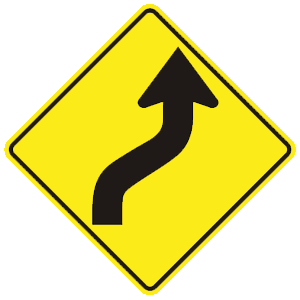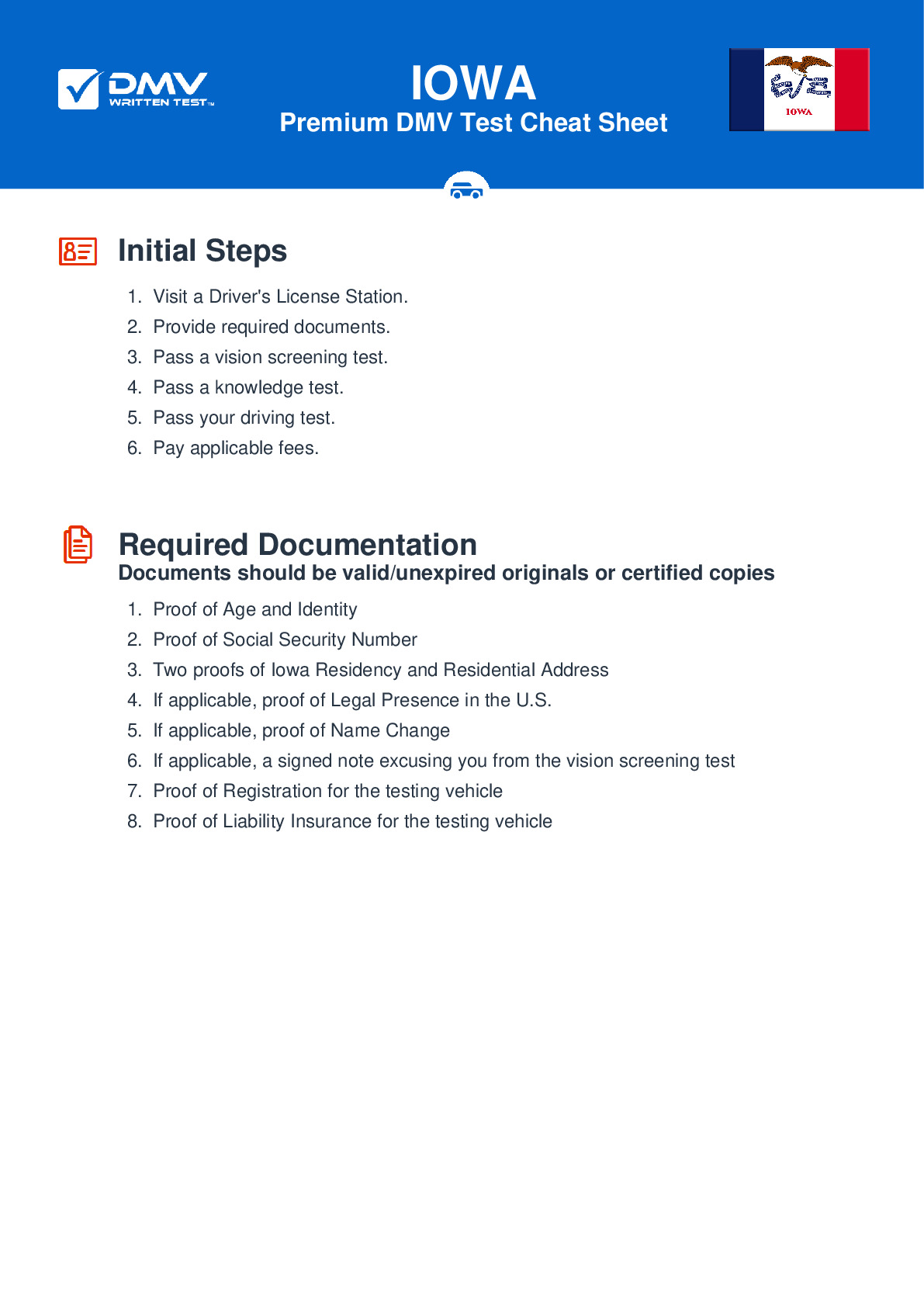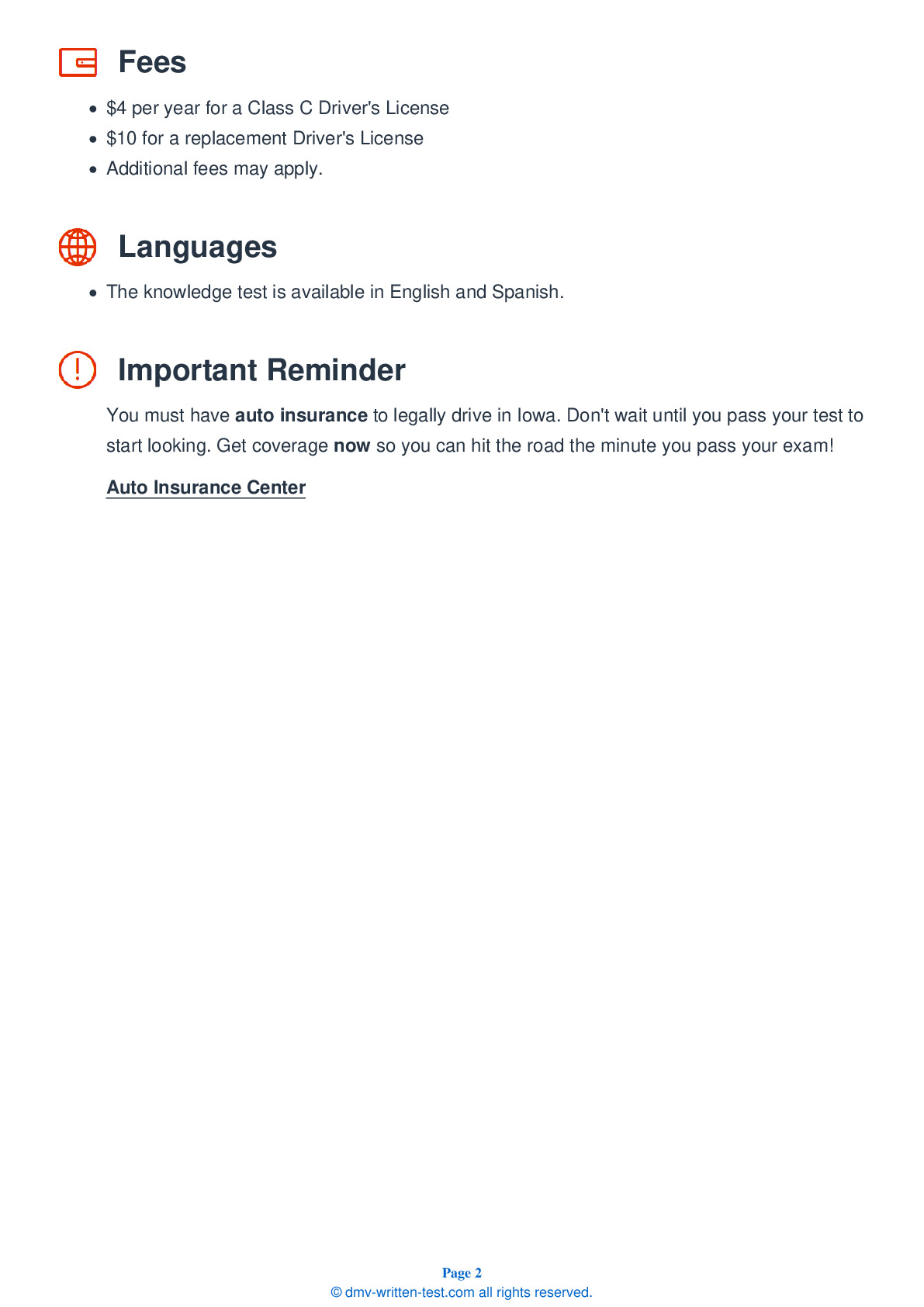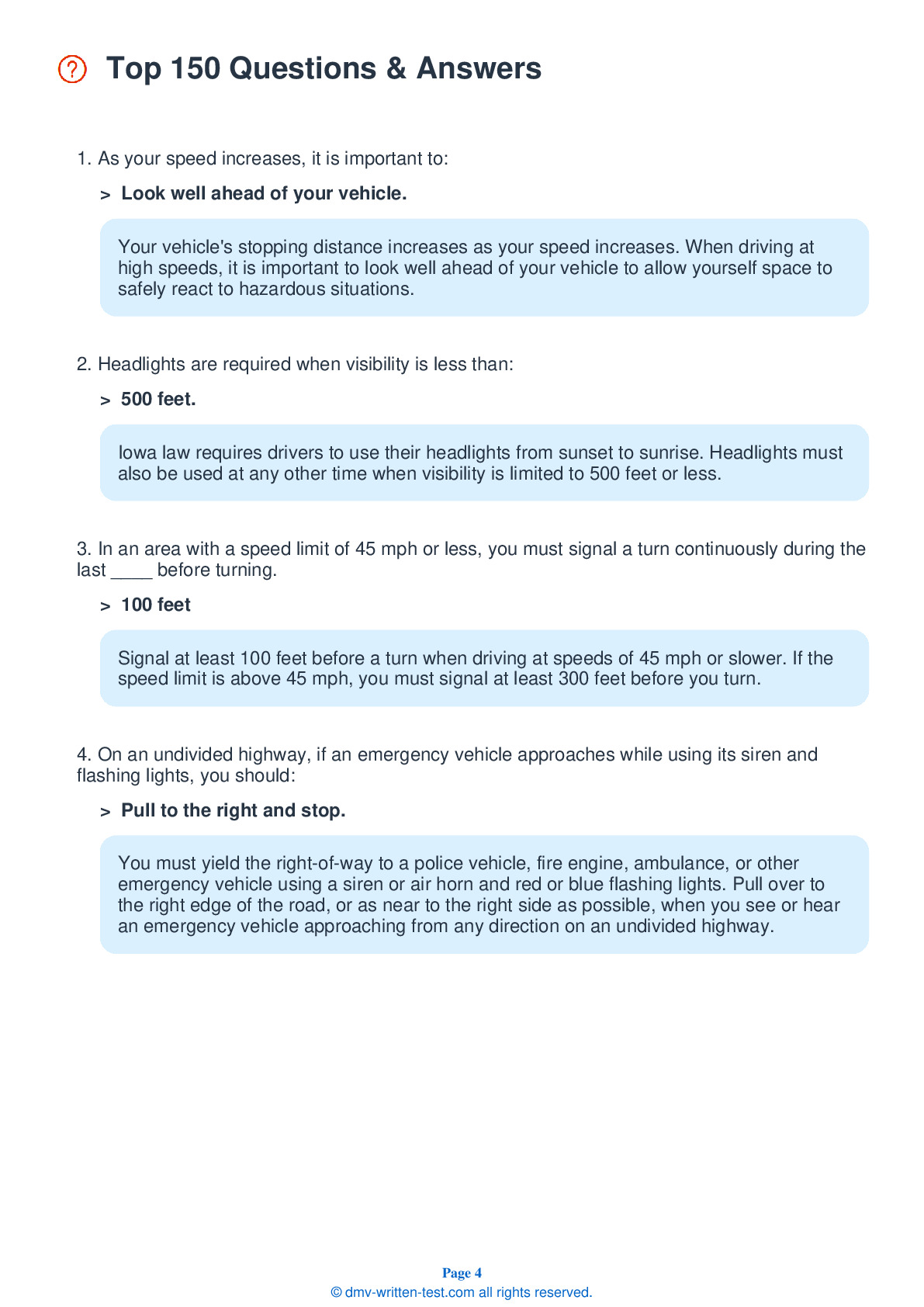2025 Iowa Permit Test 22
The following questions are from real DMV written tests. These are some of the actual permit questions you will face in Iowa. Each permit practice test question has three answer choices. Select one answer for each question and select "grade this section." You can find this button at the bottom of the drivers license quiz. For a complete list of questions and answers for Iowa please visit https://cheat-sheets.dmv-written-test.com/en/iowa/car.
Number of Tests
Number of Question
Passing Score
25. This sign means:

Explanation
Warning signs are used to warn drivers about upcoming hazardous conditions and are usually yellow with black markings. This sign warns drivers that the road ahead curves to the right and then to the left.
26. When passing another vehicle, you should return to your original lane when:
Explanation
When passing another vehicle, move back into your original lane only when you can see the passed vehicle’s headlights in your rearview mirror. This ensures that you will have enough room to safely pull back in front of the other vehicle.
27. To see vehicles in your blind spots, you should check:
Explanation
By definition, blind spots are areas that cannot be seen using your mirrors. To check your blind spots, you should look over your shoulders.
28. A broken yellow line alongside a solid yellow line means:
Explanation
A broken yellow line alongside a solid yellow line means that passing is allowed from the lane on the side next to the broken line.
29. Water on the road can cause a vehicle to hydroplane. Your car may hydroplane at speeds as low as:
Explanation
Hydroplaning occurs when there is standing water on a roadway. At speeds up to 35 mph, most tires will channel water away from the tire. As your speed increases past 35 mph, tires cannot channel the water as well and your tires may start to lose contact with the road and ride over the water like a set of water skis.
30. What should you do if your vehicle’s right wheels leave the pavement?
Explanation




